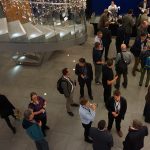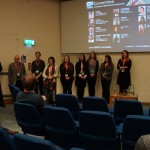Mapping Acid Mine Drainage at different scales using hyperspectral airborne and simulated multispectral and hyperspectral spaceborne data
Abstract
Mapping Acid Mine Drainage at different scales using hyperspectral airborne and simulated multispectral and hyperspectral spaceborne data.
Simone Zepp(1), Christian Fischer(1), Derek Rogge(1), Henk Coetzee(2)
(1) German Aerospace Center (DLR), Earth Observation Center, Germany
(2) Council of Geoscience (CGS), Environmental Geosciences, South Africa
Past and current coal mining activities in the Emahaleni coalfield area in Mpumalanga (South Africa) have caused serious impacts on environment and infrastructure. One important impact is the existence of Acid Mine Drainage (AMD), caused by wasted overburden and generated at abandoned near subsurface underground coal mine sites. AMD generation processes are steered by uncontrolled water flows within former mine excavations, uncontrolled underground coal seam fires and the pattern of partially collapsed roof layer that lead to the generation of open water bodies. These dynamic processes are interacting and claim for a comprehensive and flexible monitoring of those areas. A total of approx. 110 km2 of Airborne Imaging Spectrometer (AISA) data at 1 m spatial resolution with 360 VNIR/SWIR bands was acquired over the study area in 2012 as part of the FP-7 project EO-Miners (http://www.eo-miners.eu). Characteristic reflectance signatures (so called endmembers) have been extracted from the imagery and used to map the spatial distribution of selected land cover types and of impacted areas. Thematic analyses are based on specific soil parameter and AMD related weathering products using pixel-based multiple endmember unmixing routines. Identification of iron-bearing minerals was based on wavelengths in the region between 0.44 and 0.86 µm. In addition, characteristic absorption features of soils with different clay-bearing minerals around 2.20 µm have been used. Based on the airborne hyperspectral data multispectral WorldView-3 (WV-3), Sentinel-2 (S-2) and hyperspectral EnMAP (Environmental Mapping and Analysis Program) scenes with their different spatial and spectral resolution have been simulated to assess and compare the potential mapping and monitoring capabilities of the different sensor systems. The results obtained so far, contribute to decision making aspects, when using different systems for complex monitoring tasks in mining districts at different scales.
Conference
2015 GRSG AGM - Challenges in Geological Remote Sensing





